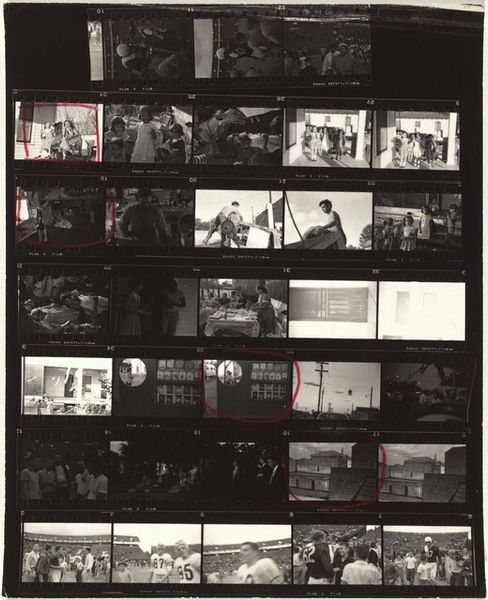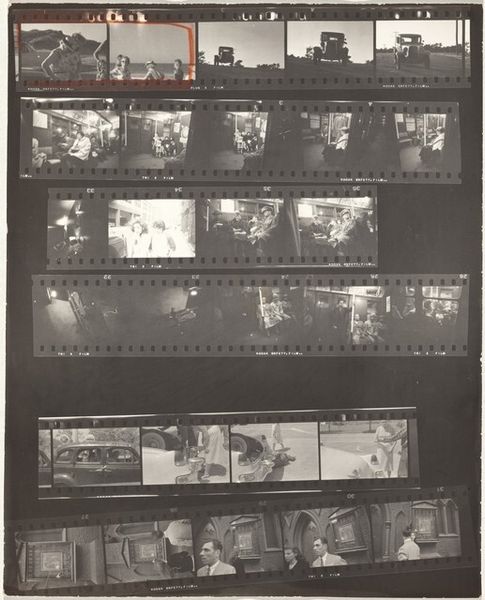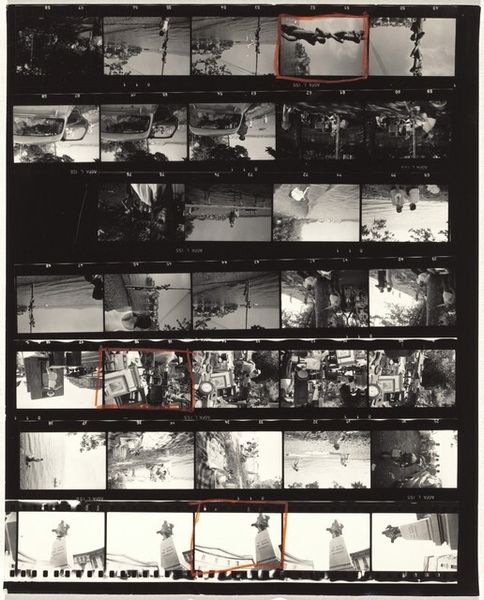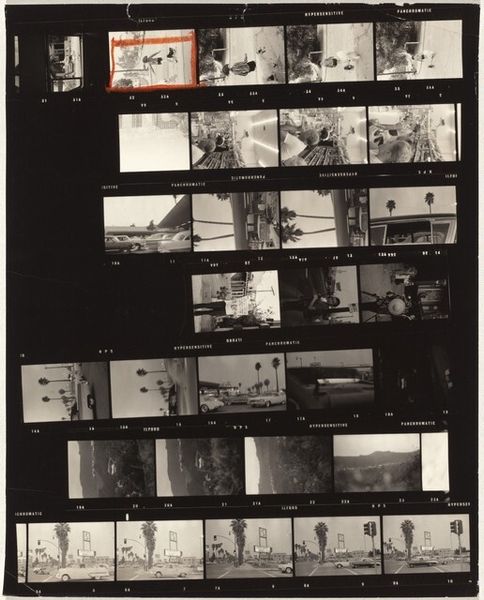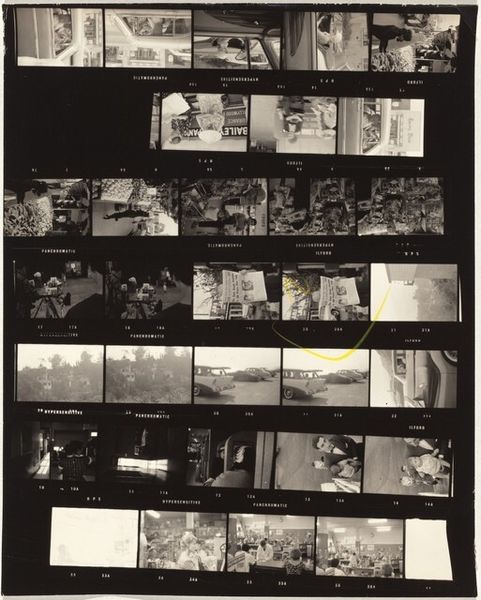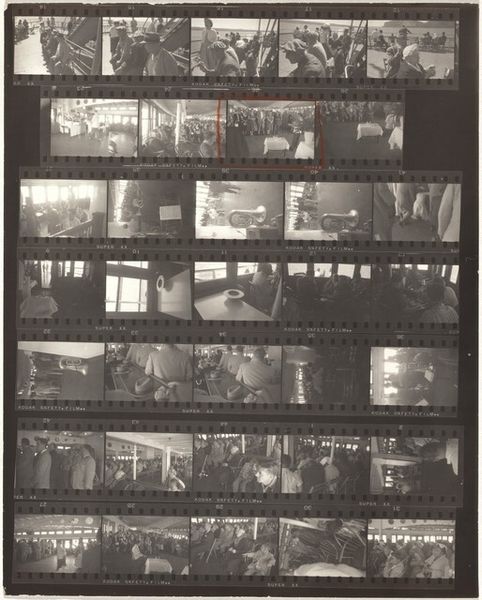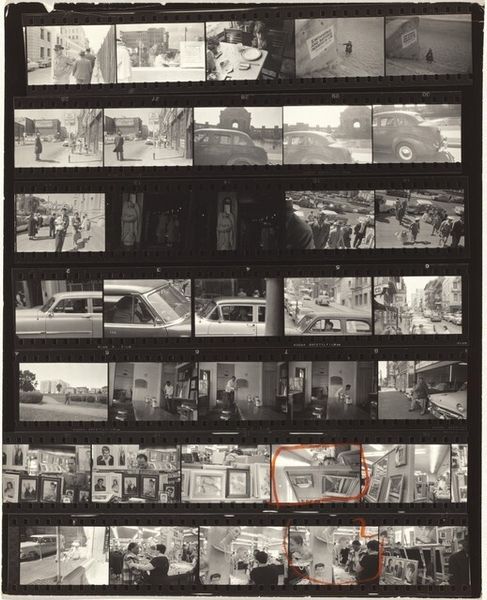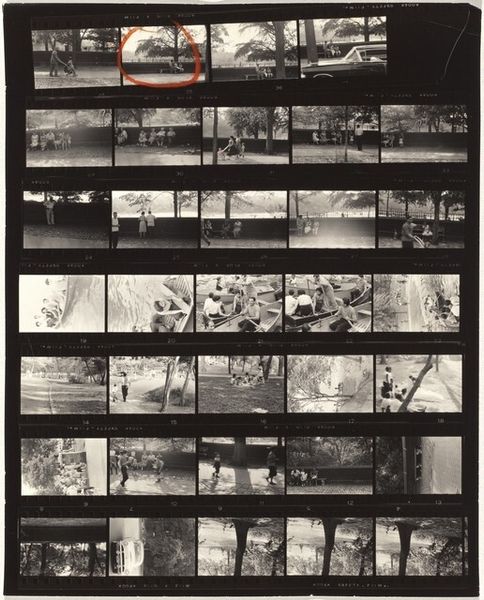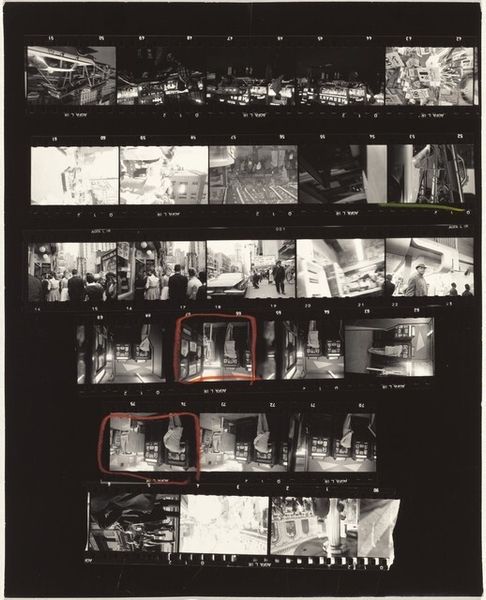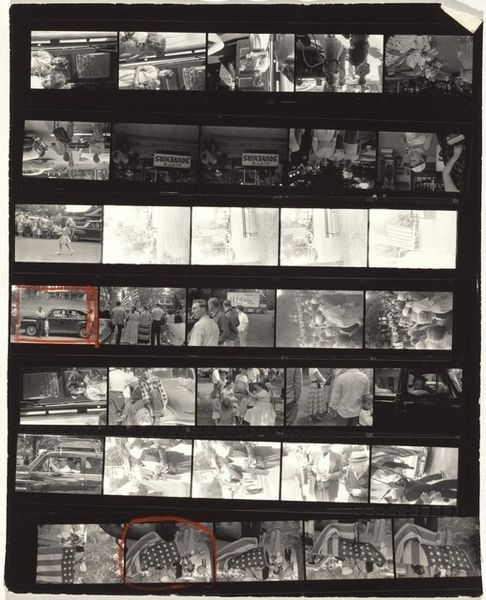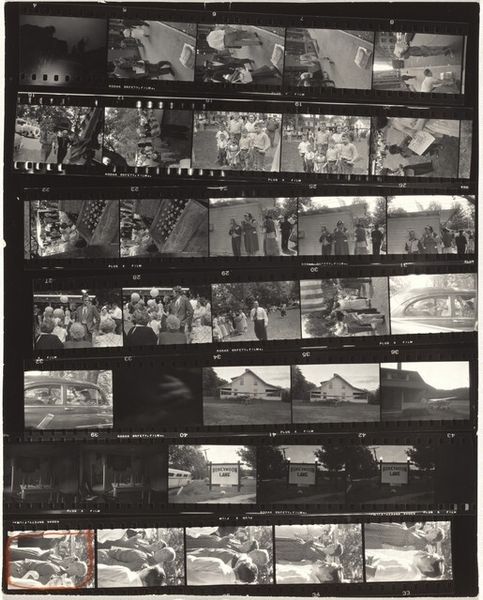
photography, gelatin-silver-print
#
excavation photography
#
portrait
#
film photography
#
wedding photography
#
social-realism
#
street-photography
#
photography
#
group-portraits
#
gelatin-silver-print
#
pop-art
Dimensions: overall: 25.2 x 20.2 cm (9 15/16 x 7 15/16 in.)
Copyright: National Gallery of Art: CC0 1.0
Curator: Here we have Robert Frank's "Convention 31," a gelatin silver print dating back to 1956. Editor: It’s a contact sheet, isn't it? Stark and almost brutally documentary. What's most immediately striking is the sense of fragmentation. Rows upon rows of almost identical shots, leaving you disoriented, trying to find a narrative. Curator: That fragmentation is precisely where its power lies. Frank masterfully dissects the illusion of the American Dream, strip by strip. He zeroes in on societal conventions, isolating them as singular, perhaps flawed, frames within a larger sequence. The visual repetition emphasizes a conformity. Editor: A dark conformity. Note the stark contrast between the dark shadows and blinding light. A real sense of postwar unease pulses beneath these conventional subjects: political gatherings, wedding receptions, street scenes, all meticulously captured and yet devoid of joy. Curator: Absolutely. The composition guides us to consider the visual rhythms Frank is playing with. Think about how light interacts with form across these different scenes. He uses light to draw out patterns, lines of force connecting and disconnecting each moment. Semiotically, the blurred frames are just as important as those in focus. Editor: And there’s a raw quality that distinguishes it from other photographs of that era, more so if compared with conventional documentary work; an apparent amateurishness which challenges accepted notions of photographic value. There’s a palpable sense of him capturing a real America that magazines and advertisements wanted to bury. Curator: He's turning the medium of photography against itself to reveal hidden aspects of American society. By presenting his subjects without gloss or idealization, Frank strips away at the constructed facade of optimism that defines the fifties. This series shows how he redefined photojournalism, pushing its aesthetic boundaries to express deeper cultural truths. Editor: In the end, it's a complex reflection, one that simultaneously attracts and repels, forcing us to look closer, not only at these images but at the historical currents running beneath them. Curator: Yes. To dissect not only the image but our preconceived notions of nationhood, prosperity and social ritual. It’s a difficult work, but one that provides vital keys for deconstructing the postwar years in the US.
Comments
No comments
Be the first to comment and join the conversation on the ultimate creative platform.
